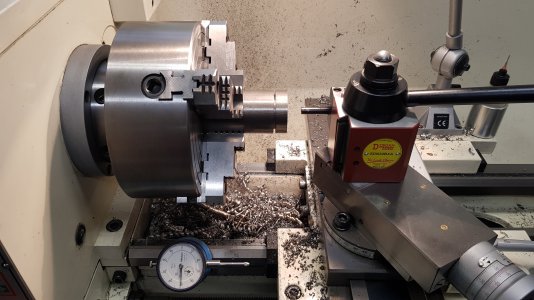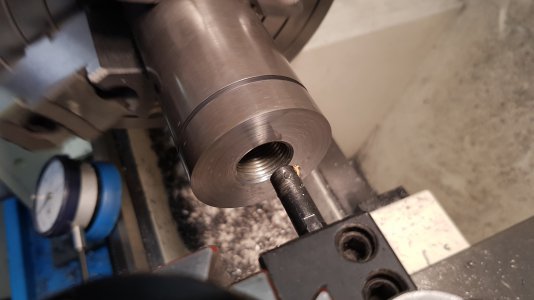- Joined
- Oct 31, 2016
- Messages
- 2,720
Needed to turn an internal thread for the adapter that I am making. Hadn't done that recently so I watched Mr. Pete's video (#186) on internal threading. He shows to have the compound point towards the tail stock. Also watched Halligan142's video on internal threading and he also said to have the compound pointed towards the tail stock. This required the threading bar to have an extremely large amount of stick out from the compound and there was a massive amount of flex as I cut the thread. I didn't remember having the compound point towards the tail stock the last time I cut an internal thread. Happened to be looking in the MOLO and the MOLO said to have the compound pointed towards the headstock when cutting internal threads. That's my recollection of how I had cut internal threads in the past. The threads worked either way.
Who's correct? Mr Pete or the MOLO?
Who's correct? Mr Pete or the MOLO?



